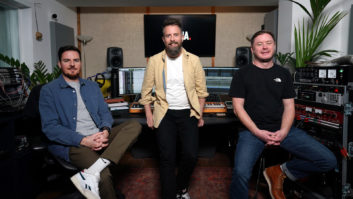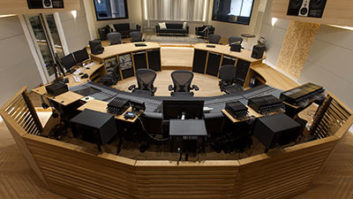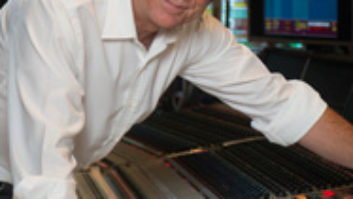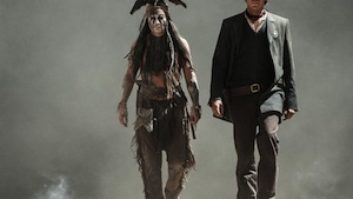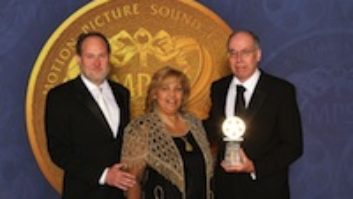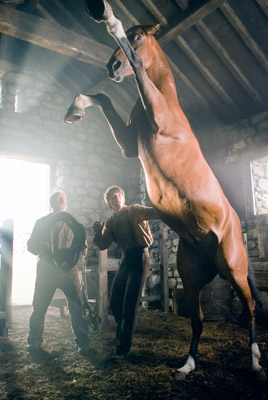
Steven Spielberg’s War Horse is a classic Hollywood epic, a throwback to a different era of filmmaking, when character development and telling a story in a cogent and methodical way were more important than gimmicky effects and manic pacing. The film is unabashedly aimed at families—there’s no sex, bad language or gushing blood—yet it is also a tale about war, violence, and complex and often difficult relationships.
“When I saw it, I was amazed how old-fashioned it felt, in a good way,” comments Gary Rydstrom, who was co-supervising sound editor (with Richard Hymns), sound designer and FX re-recording mixer for the film. “So many modern movies tend to have more edge or sarcasm or self-awareness, and this is telling a very big story in an episodic way. It’s traveling long distances and meeting a lot of different characters. It has a David Lean grandness.
“It’s a story about humanity surviving in the midst of war, told through how people relate to horses, really,” he continues. “It has a beauty to it that’s fitting and also a real emotional power. I had never worked on a movie quite like this. For me, it felt like I was able to get into a time machine and do a movie in 1960, but with Pro Tools and digital consoles.” [Laughs]

Gary Rydstrom
War Horse, and the recent Mission Impossible: Ghost Protocol, mark Rydstrom’s return to mainstream feature sound work following seven years at Pixar, where he directed and supervised the sound for a pair of well-received shorts (Lifted was Oscar-nominated), was the studio’s in-house audio consultant and was directing a full-length film called Newt until it was canceled in mid-2010. Before his time at Pixar, Rydstrom spent two decades at Skywalker Sound, working on dozens of top films, nine of which earned him Oscar nominations; of those, seven wins for four movies: Terminator 2, Titanic and two Spielberg films, Jurassic Park and Saving Private Ryan. He last worked with Spielberg on Minority Report in 2002.
Rydstrom got the call to work on War Horse a few months before the relatively short two-month shoot in England during the fall of 2010. “We did a lot of our collecting of sounds based on the script, and luckily the script had a good sense of what the movie would be and a great sense of tone, and it also had that old-fashioned quality. Maybe that’s why we collected so many sounds—because we hadn’t seen the movie yet. We did some recording trips that, had we seen the movie, maybe we wouldn’t have done. But once we did see the movie, we had a huge amount of great material to work with.
“We recorded all over the place and we had a lot of people doing it,” he continues. “E.J. Holowicki [who has contributed sounds for numerous Pixar films] did a lot, and Nia Hansen was a field recordist for us on this and happens to own horses and know horses really well. We recorded a ton of stuff and a lot of it, not surprisingly, was horses and every type of horse, including a foal being born, which is pretty amazing. We recorded race horses, putting mics with jockeys on the horses because we had cavalry charges [in the film]. Nia went to a vet hospital at UC Davis and recorded horses coming out of anesthesia, sick horses, horses with tracheotomies. The sad truth is this often is a movie about horses struggling, so we had to find ways of capturing that without making them actually go through what it looks like they’re going through.

“At the beginning, Spielberg said to me, ‘Just make sure they’re really horses.’ I think he worries that we sound people are going to put together a walrus and an otter and call it a horse,” he says with a laugh. “Every movie I’ve ever worked with him, Steven gives me something not to do, and for this one, it was to not use non-horse sounds for horses. But that was fine because horses make such a broad range of sounds. For me, the great revelation was, if you record miniature horses, which have an emotional range that makes them seem almost dog-like at times, and then slow them down, they sound like a full-sized horse.”
Do you do your pitch alteration in Pro Tools? “Within Pro Tools, and I also still have a Synclavier. My room at Skywalker is pretty much a museum of the 1980s,” he says jokingly. “I’ve got a Synclavier and a quarter-inch deck—there’s still nothing better for slowing sounds down.”
There are two main horse characters in the film: We follow Joey from his birth on a farm in southwest England through his “conscription” into the British Army on the eve of World War I (hence the title); and the larger black horse Topthorn figures into the war part of the story. Rydstrom says it was important to give each horse his own sonic personality, so great care was taken in assigning vocalizations, breathing and movement sounds to what are, in a sense, the film’s main characters.
“When I first talked with Spielberg,” Rydstrom offers, “what I most wanted him to explain was his idea of Joey’s character because we treat him like a real actor. And he said Joey was noble, so even when Joey’s in pain, we still wanted to make him somehow sound noble. The movie is full of opportunities to let the horses ‘act.’ All of the vocals and sounds of Joey for the whole movie were cut by Terry Eckton, who’s a longtime Northern California sound editor who specializes in creature vocals.
“We collected so many great horse sounds, and then I would organize them: ‘This seems like a Topthorn vocal, this seems like a Joey vocal, based on size. This might be good for this scene.’ When Terry started cutting the horses, we would spot it, and this is where my years at Pixar came in handy because it was sort of like working with an animator, where you say, ‘I want the character to feel like this, or do this, or do this.’ So we would talk about where the horse’s brain was—what he was feeling—in the scene and then try to create a character through that. Terry would go off and cut something amazing from our library and then we’d finesse it into the movie. Breathing does a lot for you, and there’s a huge range of breathing, but it’s also one of the hardest things to cut because there’s a pace and a rhythm to it. When we got to the final mix, we ended up simplifying some of the horse vocals and relied more on breathing.”
Horse Foley—encompassing hoof steps, body swishes and shudders, and tail shakes—was also critical in providing depth and dimension to the horses. Dennie Thorpe and Jana Vance performed the Foley, which was supervised by Luke Dunn Gialmuda, recorded by Sean England and edited by Colette Dahanne.

The other major aspect of the film is war, and that area also offered many challenges to Rydstrom and his team. There are a few big battles, including one in which a regiment of British cavalry unwittingly charges into a hidden nest of German machine guns, and a long, pivotal scene depicting trench warfare and its attendant horrors—the steady bombardments, the seemingly ineffectual assaults where hundreds of lives are lost trying to take over a few more yards of the contested “no man’s land” that separate the British and German troops. Still, this is a PG-13 film and the overall look of the film, even the war scenes, is more poetic than graphic.
Rydstrom comments, “Comparing it to Private Ryan, which had a sort of brutal, realistic quality to it—almost a documentary, you-are-there, walking through D-Day with a Bolex camera feeling—this is more distanced. And we did that with the sound, too; we tried to give it a more controlled, bigger-than-life feeling. There are still real guns and real artillery-bys and the sound of distant artillery. But I felt on this movie I could be more flexible with playing around with the war sounds than I was on Private Ryan, where I felt I had to be true to life. Here, I thought we could be a little more stylistic because of the tone and because, really, it’s a story about war perceived by horses, if you think about it. I thought we had the leeway to do more iconic war sounds.”
As is common with these sorts of films, the recording team captured a wide variety of guns and ordnance from various distances and angles using portable digital recorders. However, “We also dusted off the Nagras and did a lot of the recording of guns and artillery and explosions with those,” Rydstrom says. “They’re just as hard to lug around as they always were, but they gave us a really big, beefy sound. For a lot of the gun recording, we’d record on Nagras and a series of digital recorders at the same time and I could mix and match. But there was a quality to the Nagra recording the digital couldn’t match.”
For an important scene involving Joey being terrorized by a then-new Mark IV English tank, Rydstrom notes, “It was impossible to find a working Mark IV tank—the one they used on the set was something else underneath. For the tank, the engine became less important, and what we concentrated on instead was the squeals it makes and the grinding of the gears and the rattles. It ended up being a mish-mash of things. I even recorded my push lawnmower—this old-fashioned, spinning lawn mower—and I slowed that down and combined it with other stuff. I admit I did go into the Saving Private Ryan library and found a basic engine that would work and some tread stuff, but then we sweetened it and made it rattlier and squeakier than anything we had done before.” As for the new-fangled 250-round Maxim maschinengewehr (machine gun), Rydstrom credits production recordist Stuart Wilson with getting some excellent recordings of Maxims on the set.
Other war sounds—the majority of them off-camera, allowed Rydstrom and company to get creative: “We manufactured a lot of sounds of explosions and war as heard from a trench and I used things that weren’t real—I used glacier sounds or cracking wood and slowed them down and phased them and treated them a little bit. It was a way to get that claustrophobic feeling of the trench. We also manufactured all these really bizarre artillery pass-bys using vacuum cleaners and bowed metal—anything I could Doppler. There was great variety to it.”
However, dedicated film buff that he is, Spielberg also requested the inclusion of a certain sound that Stanley Kubrick had employed in his World War I film, Paths of Glory. “It’s the classic World War I artillery whistle,” Rydstrom says. “So we found one that was close enough that we were all happy and put that in. It was also a wonderful sound to pan through the surrounds because you’d get the sound of the war going overhead.”
Rydstrom and his crew did their sound editing and premixing work at Skywalker; then the action moved down to Fox’s Neve DFC–equipped Howard Hawks stage for the final mix, most of which was accomplished in a two-week window that Spielberg had in the midst of finishing his other new film, The Adventures of Tintin. Andy Nelson mixed John Williams’ lush and beautiful score—very prominent in the film—and Tom Johnson mixed dialog. “Steven was there every day, which was not always the case in my experience on other movies with him,” Rydstrom says, “and John Williams was, too. So it was as collaborative as you can imagine between those two and us and Richard [Hymns] and the sound crew. It was as an intense two weeks of mixing as I’ve ever had, but it was also very satisfying because everyone was there.”
More From Gary Rydstrom About Sound for War Horse
On the gripping scene in which two soldiers attempt to extricate Joey from a tangle of barbed wire: “We recorded real barbed-wire, taut barbed-wire, but also wire twangs. It’s the kind of stuff Ben Burtt used to make laser sounds for Star Wars: You pluck a wire and get those great twangs. Krysten Mate was our lead effects editor; she cut that scene. The detail of the movement of the barbed-wire being cut is the kind of sound-cutting that’s very impressive because there’s nothing for it to hide in. It’s a very spare scene; there’s no music in it. I made various no man’s land ambiences, which were an attempt at making the sound of nothing—just a sort of hollow roar so you hear everything. The barbed-wire was one element and then there were the vocals that Joey made. A lot of that is off-screen—pained vocals from the horse.”
On co-supervising with Richard Hymns: “One of Richard’s main jobs on the movie was cutting the ambiences, so he was able to draw on his memories. It takes place in England and he comes from England. He would think about the birds and the sounds he remembered growing up in England—what certain areas sounded like to him. He didn’t live in Devon [where some of the film takes place], but he knows the area and he knows what that rolling farm country is like. At one point, Richard went to England to visit family but he also took a recorder and recorded a lot of ambiences. And he has a lot of contacts in England so we got a lot beautiful recordings from other people through Richard, and we had a massive library of ambiences of birds and insects and winds—things that were true to England and France. We even used some older recordings from the BBC and other places.”
On working with a big John Williams score: “I have done so many mixes with his music. They’re not hard to work with because they’re always beautiful. In the case of War Horse, it defines the sound of the movie more than anything else. It’s a beautiful score, and he scored it in a way that it’s not scoring action, it’s scoring emotion, and that’s wonderful for us because in a traditional action-movie score, they might be pacing it off the action, but John’s doing this over-arching thing that holds the movie together, so various themes really build over the course of the movie and are less specific to the action you’re seeing.
“Technologically, with Pro Tools on the stage, you can move a bird tweet around and choose your sounds to work best with the music, when there is music. There are also long stretches with no music—both John and Steven are good at saying, ‘This part is going to be carried by dialog and FX.’”
A final thought on Spielberg: “Very few filmmakers could pull off this movie. It’s a movie movie. It’s definitely one of those movies you have to see on the big screen to really appreciate. It feels big in all the right ways. It’s very earnest, very sincere. It was a good movie for me to come back to the fold for.”
